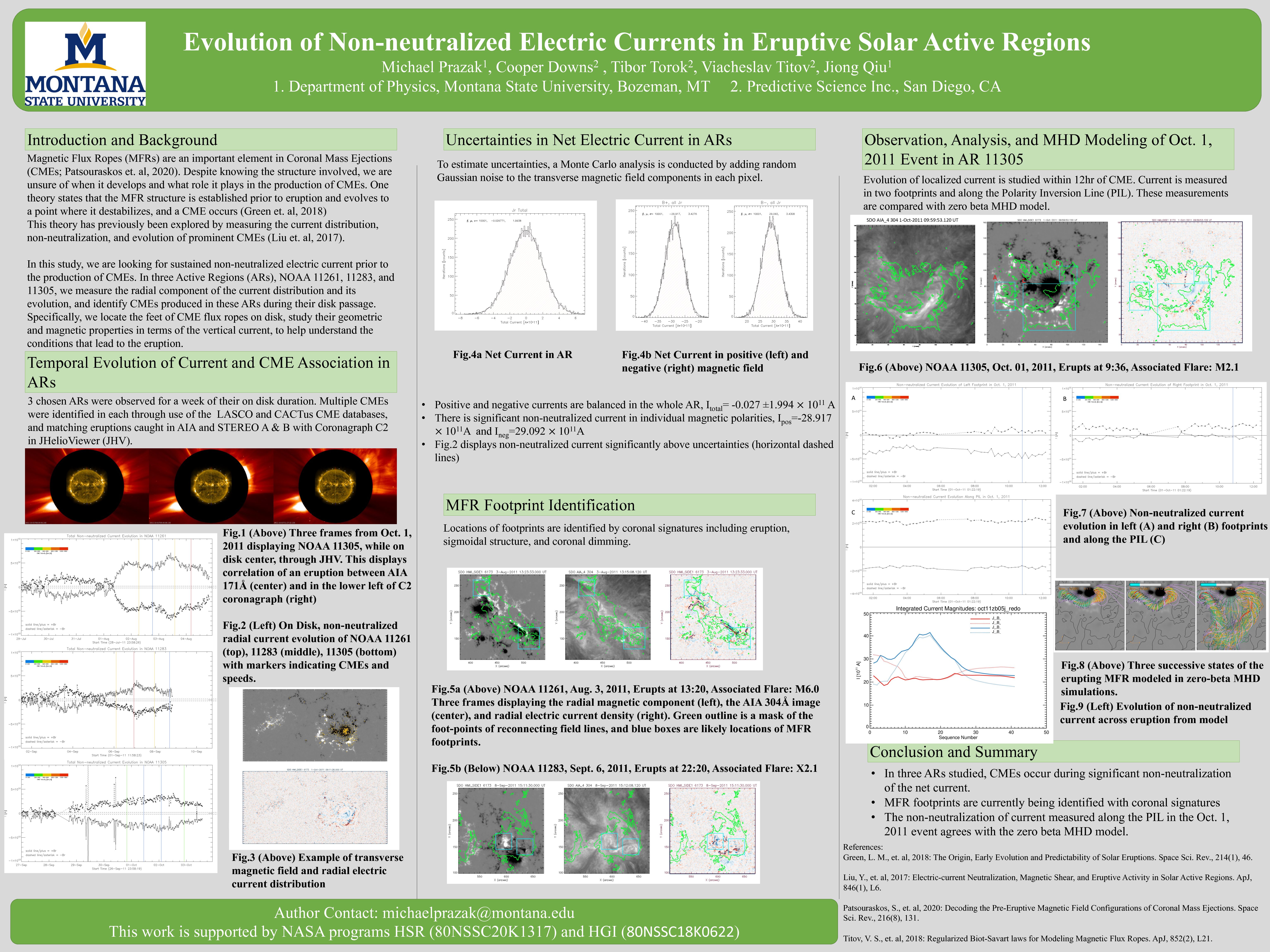Authors: Michael Prazak (Montana State University), Cooper Downs (Predictive Science Inc.), Tibor Torok (Predictive Science Inc.), Viacheslav Titov (Predictive Science Inc.), Jiong Qiu (Montana State University)
We study the evolution of three solar active regions (ARs) that produced both fast (>600 km/s) and slow (<600 km/s) coronal mass ejections (CMEs). We have been analyzing the vector magnetic field measurements for the ARs during their disk passage, and our preliminary results suggest that the ARs produced both slow and fast CMEs only in the presence of non-neutralized electric currents. We have also analyzed the temporal and spatial evolution of non-neutralized currents in NOAA AR 11305, which produced an M-class eruptive flare. Strong non-neutralized currents, associated with emerging flux and shear flows, were located along the magnetic polarity inversion line. The observations suggest the presence of a magnetic flux rope (MFR), which evolved and erupted, forming flare ribbons that encompass the areas of strong current. The regularized Biot-Savart laws (rBSLs; Titov et. al. 2018) formalism and a zero-$\beta$ magnetohydrodynamic (MHD) model were employed to construct the aforementioned MFR and to follow its evolution. The spatial location and the amount of non-neutralized currents computed from the model agree with the observational measurements. This result suggests that the development of the MFR, which is associated with sustained and concentrated photospheric non-neutralized electric currents, is an important element for the production of the CME in this study. This work is supported by NASA programs HSR (80NSSC20K1317) and HGI (80NSSC18K0622).


